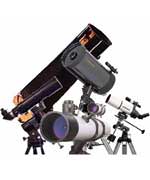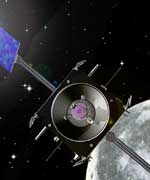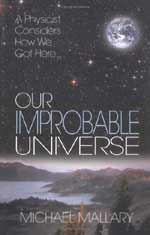Monday, February 14 – Happy Valentine’s Day! One of the more unusual and ephemeral objects for the northern sky is the elusive IC 1805 – known as the “Heart” nebula in Cassiopeia. Thanks to the presence of the Moon and the constellation’s position, viewing the IC 1805 will be next to impossible, but you can still challenge yourself to Mel 15, the 7th magnitude star cluster associated with the “Heart”. Remember its position for a night with clear, dark skies. The IC 1805 will be your “Valentine” for years to come. You see? Even the stars can hold surprises!
And what could be more romantic than a moonlit evening? Why not take out a scope and tonight let’s study dorsa! Along the terminator you will see 75% of Mare Tranquillitatis, joined at its northern edge by the beginnings of Mare Serenitatis. It is here that you will find our “marker” – the ancient walled plain Posidonius. Inside Serenitatis and running parallel with the terminator are the snake-like lines of the Dorsa Smirnov – a beautiful collection of wrinkle ridges known as “dorsa”. To the south look for the “three ring circus” of craters Theophilus, Cyrillus and Catharina. Focus your attention on the sunlit Mare Nectaris. Cutting across it between Theophilus in the north, and shallow open crater Beaumont in the south you will see a thin, bright line. Congratulations! You have just spotted an officially “unnamed” lunar feature that is often referred to as Dorsa Beaumont.
Very cool…
Tuesday, February 15 – Happy 441st Birthday to Galileo Galilei! He was the first scientist to use a telescope for astronomical observation. I wonder if Galileo could have ever dreamed when he first saw the Moon that mankind would one day walk on its surface? Let’s celebrate his achievements by a look into lunar history…
Tonight, all of Mare Tranquillitatis, and the majority of Mare Serenitatis will be revealed just north of the terminator’s mid-point. On the northwestern shore of Serenitatis, you will see the eastern portion Caucasus Mountains emerging in the sunlight. Tonight let us take an historic journey to the southwest edge of Tranquillitatis and visit with the Apollo 11 landing area. Although we can never see the “Eagle” telescopically, we can find where it landed! Tracing along the western wall, look for the small circles of craters Sabine and Ritter. Once you have located them, go to your highest power! To the east in the smooth sands you will see a parallel line of three tiny craters. From west to east, these are Aldrin, Collins and Armstrong – the only craters to be named for the living! It is just south of these three tiny punctuations that Apollo 11 touched down, forever changing our perceptions of space exploration.
Galileo would have been proud!
Sunday, February 26 – Fran?ois Jean Dominique Arago was born on this day in 1786. Arago was the pioneer scientist in the wave nature of light and the inventor of the polarimeter and other optical devices. In February 1948, Gerard Kuiper discovered Uranus’s moon, Miranda. And speaking of moons, did you see Selene during the daylight today? Spectacular, isn’t it? Have you ever wondered if there was any place on the lunar surface that has not seen the light? Then let’s go exploring for one tonight…
Our first order of business will be to identify crater Albategnius. Directly in the center of the Moon is a dark floored area known as the Sinus Medii. South of it will be two conspicuously large craters – Hipparchus to the north and ancient Albategnius to the south. Trace along the terminator toward the south until you have almost reached its point (cusp) and you will see a black oval. This normal looking crater with the brilliant west wall is equally ancient crater Curtius. Because of its high latitude, we shall never see the interior of this crater – and neither has the Sun! It is believed that the inner walls are quite steep and the crater Curtius’ interior has never been illuminated since its formation billions of years ago. Because it has remained dark, we can speculate that there may be “lunar ice” pocketed inside its many cracks and rilles that date back to the Moon’s formation!
Because our Moon has no atmosphere, the entire surface is exposed to the vacuum of space. When sunlit, the surface reaches up to 385 K, so any exposed “ice” would vaporize and be lost because the Moon’s gravity cannot hold it. The only way for “ice” to exist would be in a permanently shadowed area. Near Curtius is the Moon’s south pole and Clementine imaging showed around 15,000 square kilometers of area where such conditions could exist. So where did this “ice” come from? The lunar surface never ceases to be pelted by meteorites – most of which contain water ice. As we know, many craters were formed by just such an impact. Once hidden from the sunlight, this “ice” could go on to exist for millions of years!
Thursday, February 17 – So… would you like to do a little lunar “prospecting” tonight? Then let’s explore a crater similar to last night’s Curtius. In the north, identify previous study crater Plato. North of Plato you will see a long horizontal area of gray floor – Mare Frigoris. North of it you will note a “double crater”. This is elongated diamond-shape is Goldschmidt and the crater which cuts across its western border is Anaxagoras. The lunar “north pole” isn’t far from Goldschmidt and since Anaxagoras is just about one degree outside of the Moon’s theoretical “arctic” area, the lunar sunrise will never go high enough to clear the southernmost rim. As proposed with yesterday’s study, this “permanent darkness” must mean there is ice! For that very reason, NASA’s Lunar Prospector probe was sent to explore. Did it find what it was looking for? Answer – Yes!
The probe discovered vast quantities of cometary ice which have hidden inside the crater’s depths untouched for millions of years. If this sounds rather boring to you, then realize this type of resource will colour our plans to eventually establish a manned “base” on the lunar surface! On March 5, 1998 NASA announced that Lunar Prospector’s neutron spectrometer data showed that water ice was discovered at both lunar poles. The first results showed the “ice” mixed in with lunar regolith (soil, rocks and dust), but long term data confirmed near pure pockets hidden beneath about 40 cm of surface material – with the results being strongest in the northern polar region. It is estimated there may be as much as 6 trillion kg (6.6 billion tons) of this valuable resource! If this still doesn’t get your motor running, then realize we can never establish a manned lunar base because of the tremendous expense involved in transporting our most basic human need – water. The presence of lunar water could also mean a source of oxygen, another vital material we need to survive! And if we wanted to return home or onward, these same deposits could provide hydrogen which could be used as rocket fuel. So as you view Anaxagoras tonight, realize that you may be viewing one of mankind’s future “homes” on a distant world!
Friday, February 18 – Today in 1930 Clyde Tombaugh discovered Pluto during a search with photographic plates taken on the Lowell Observatory’s 13″ telescope. Although we might not make such a monumental contribution, we can still do a little “mountain climbing”! Tonight the most outstanding feature on the Moon will be Copernicus, but since we’ve delved into the deepest areas of the lunar surface, why not climb to some of its peaks?
Using Copernicus as our guide, to the north and northwest of this ancient crater lay the Carpathian Mountains ringing the southern edge of the Mare Imbrium. As you can see, they begin well east of the terminator, but look into the shadow! Extending some 40 km (25 miles) beyond the line of daylight, you will continue to see bright peaks – some of which reach 2072 meters (6600 feet) high! When the area is fully revealed tomorrow, you will see the Carpathian Mountains eventually disappear into the lava flow that once formed them. Continuing onward to Plato, which sits on the northern shore of Imbrium, we will look for the singular peak of Pico. It is between Plato and Mons Pico that you will find the scattered peaks of the Teneriffe Mountains. It is possible that these are the remnants of much taller summits of a once stronger range, but only around 1890 meters (6200 feet) still survives above the surface. Time to power up! To the west of the Teneriffes, and very near the terminator, you will see a narrow “pass” cut through the region, very similar to the Alpine Valley. This is known as the Straight Range and some of its peaks reach up to 2072 meters (6600 feet)! Although this doesn’t sound particularly impressive, that’s over twice as tall as the Vosges Mountains in central western Europe and on the average very comparable to the Appalachian Mountains in the eastern United States. Not bad!
Saturday, February 19 – Nicholas Copernicus was born on this day in 1473. Copernicus advanced our understanding of earth’s relation to the motions of the solar system. He was a man who could see the “big picture”!
Tonight let’s continue our Moon mountain climbing expedition and look at the “big picture” on the lunar surface. Tonight all of Mare Imbrium is bathed in sunlight and we can truly see its shape. Appearing as a featureless ellipse bordered by mountain ranges, let’s identify them again. Starting at Plato and moving east to south to west you will find the Alps, the Caucasus, the Apennine and the Carpathians mountains. Look at the form closely… Doesn’t this appear that perhaps once upon a time an enormous impact created the entire area? Compare it to the younger Sinus Iridium. Ringed by the Juras Mountains, it may have also been formed by a much later and very similar impact.
And you thought they were just mountains…
Sunday, February 20 – Today in 1962 John Glenn became the first American to orbit the Earth three times aboard Friendship 7. Only 32 years later, the Clementine Lunar Explorer also went in orbit – but this time around the Moon! Let’s get out the scopes…
Tonight’s most prominent lunar feature will be the graceful Gassendi towards the south, but it is a crater in the Oceanus Procellarum that we will be studying tonight. Within the “Ocean of Storms” you will find the bright point of Class 1 crater Kepler, just slightly above the terminator. The sprawling Oceanus Procellarum has low reflectivity (albedo) because the mare lavas are primarily dark minerals like iron and magnesium. Bright young Kepler (32 km/2.6 km) will show a wonderfully developing ray system, but there is so much information there! The very hills that Kepler’s initial impact drove into are part of the Alpes Formation – the inner ejecta from the Imbrium area which we noted last night. At high power you will see that the hills themselves have been filled with lava flow before Kepler was formed. The crater rim itself is very bright, consisting mostly of a pale mineral called anorthosite. The lunar rays extending from Kepler are anorthosite fragments that literally were splashed out and flung across the lunar surface during the impact that formed this crater. The region is also home to lunar feature known as “domes” – seen between the crater and the Carpathian Mountains. So unique is Kepler’s geological formation that it became the first crater to mapped by U.S. Geological Survey in 1962. This fantastic chart was labeled I-355 and was the work of R.J. Hackman.
Kepler… Not just another boring crater!
Until next week? “May you all shine on… like the Moon, the stars, and the Sun…”
May your journey be at light speed! ~Tammy Plotner



